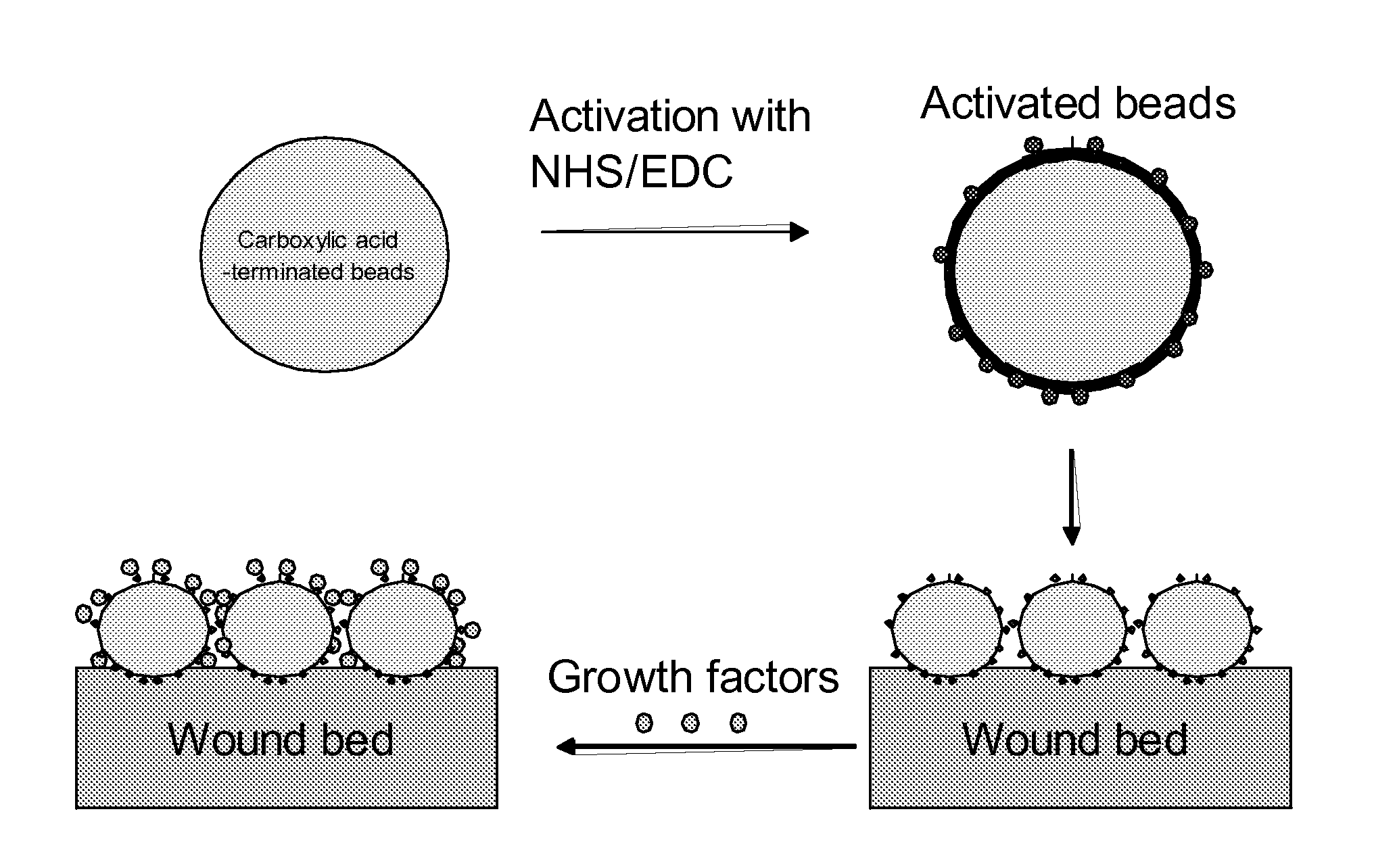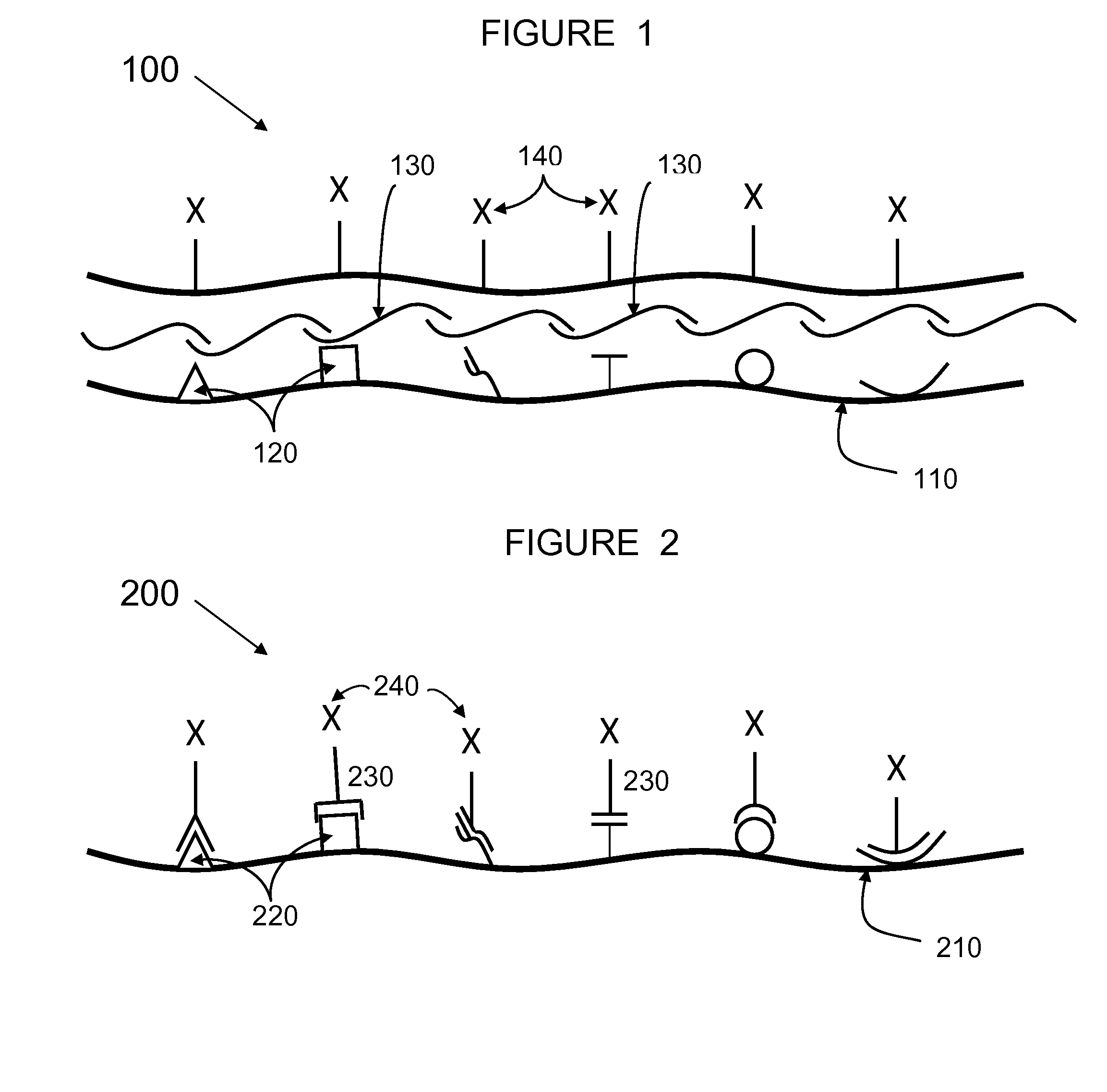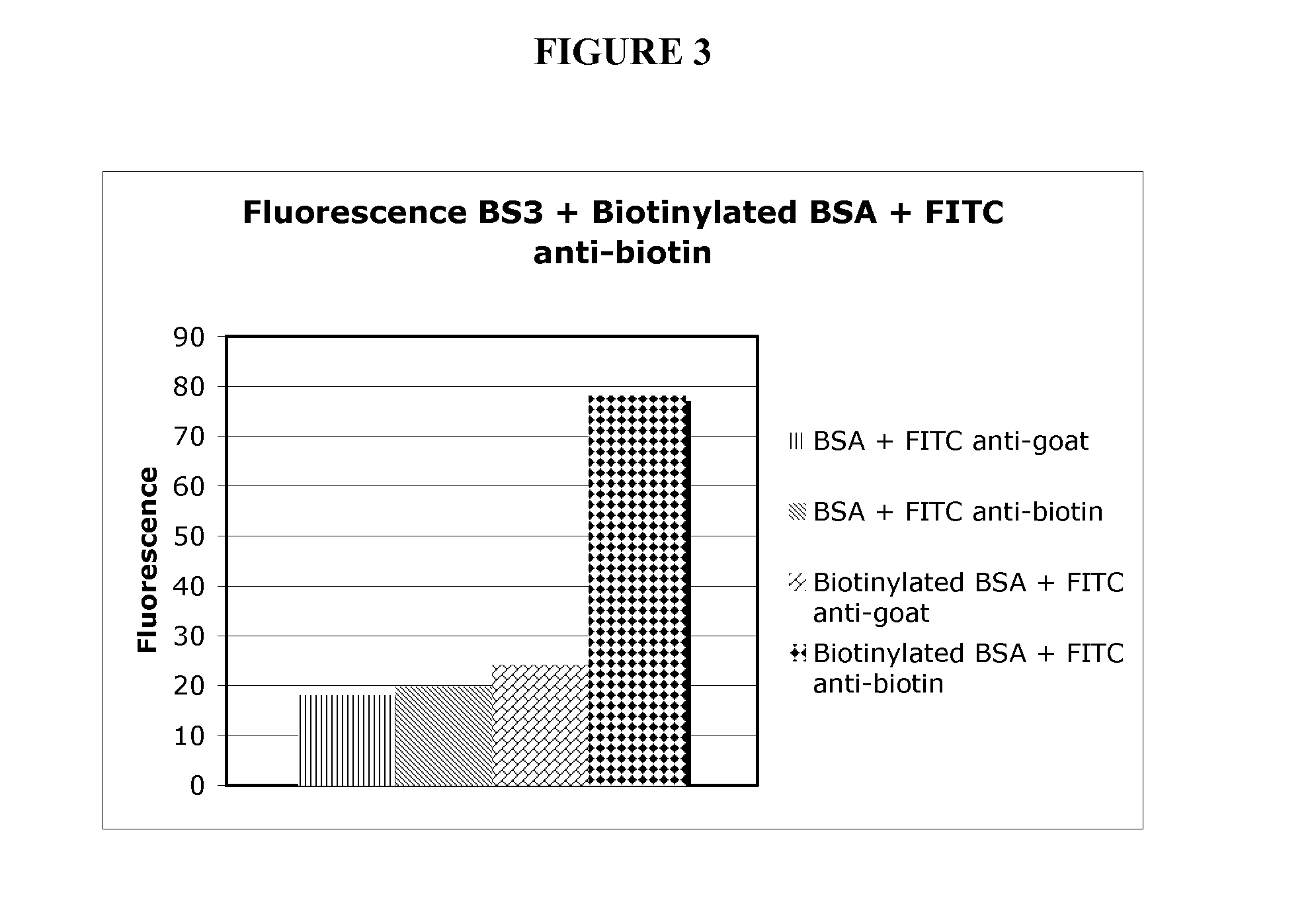Methods and compositions for wound healing
- Summary
- Abstract
- Description
- Claims
- Application Information
AI Technical Summary
Benefits of technology
Problems solved by technology
Method used
Image
Examples
example 1
Covalent Immobilization of a Protein to a Surface
[0205]To demonstrate that proteins can be covalently immobilized on model surfaces, bovine serum albumin (BSA) was used as the protein in the model system. Bovine serum albumin was biotinylated (BSA used as control) and covalently attached to gamma-amino propyl silanes (GAPS)-treated glass surfaces using the homobifunctional bifunctional cross-linker BS3 (1 mM for 15 min.). BS3 contains an amine-reactive N-hydroxysulfosuccinimide (NHS) ester at each end of an 8-carbon spacer arm. The NHS esters react with primary amines at pH 7-9 to form stable amide bonds, along with release of the N-hydroxysulfosuccinimide leaving group. For detection purposes, the biotinylated BSA was labeled with FITC-labeled anti-biotin antibodies and the BSA control was probed using FITC-antigoat antibodies.
[0206]The large fluorescent signal seen in FIG. 3 from the surfaces treated with biotinylated BSA and FITC-antibiotin antibody (diamonds) relative to control...
example 2
Layer by Layer Deposition of Polyelectrolytes in Ex Vivo Wound Beds
[0207]Experiments depositing polyelectrolytes in wound bed explants from mice were performed. Cutaneous wounds from euthanized mice were harvested. The excised wounds were sequentially treated with aqueous solutions (0.5M NaCl, PBS at pH 7.0) containing polystyrene sulfonate (PSS, 1 mg / ml) and FITC-labeled poly allylamine hydrochloride (FITC-PAH, 1 mg / ml). Between adsorption steps, the wounds were treated rinsed with PBS. After each treatment with FITC-PAH, the intensity of fluorescence was recorded. As seen in FIG. 4, the growth in fluorescence after each treatment cycle with PSS and FITC-PAH demonstrates growth of a multilayered polyelectrolyte film on the wound bed, relative to control treatments.
example 3
Use of Mesoscopic Cross-Linkers in Ex Vivo Wound Beds
[0208]Skin wounds are created in tandem on diabetic mice using a surgical skin punch. After wounding, one of the wounds is treated by contact with activated 10-micrometer diameter polystyrene beads with surfaces terminated in carboxylic acid groups. The activation of the carboxylic acid groups is achieved by incubation in EDC / NHS solution (200 mM / 50 mM) in phosphate buffered saline (PBS) (10 mM phosphate, 120 mM NaCl, 2.7 mM KCl; pH 7.6) for 1 h at room temperature. Following activation, the beads were pipetted into the wound beads and allowed to incubate within the wound beds for 1 hr. After incubation, the wound beds are washed exhaustively with PBS, and then incubated with collagen (10 micromolar in PBS). The remaining wound is used as a control and treated as described above, but without activation of the beads with NHS / EDC. The size of the wound is measured after 2, 4, 6, 8 and 10 days. It is observed that the treated wound d...
PUM
 Login to View More
Login to View More Abstract
Description
Claims
Application Information
 Login to View More
Login to View More - R&D
- Intellectual Property
- Life Sciences
- Materials
- Tech Scout
- Unparalleled Data Quality
- Higher Quality Content
- 60% Fewer Hallucinations
Browse by: Latest US Patents, China's latest patents, Technical Efficacy Thesaurus, Application Domain, Technology Topic, Popular Technical Reports.
© 2025 PatSnap. All rights reserved.Legal|Privacy policy|Modern Slavery Act Transparency Statement|Sitemap|About US| Contact US: help@patsnap.com



